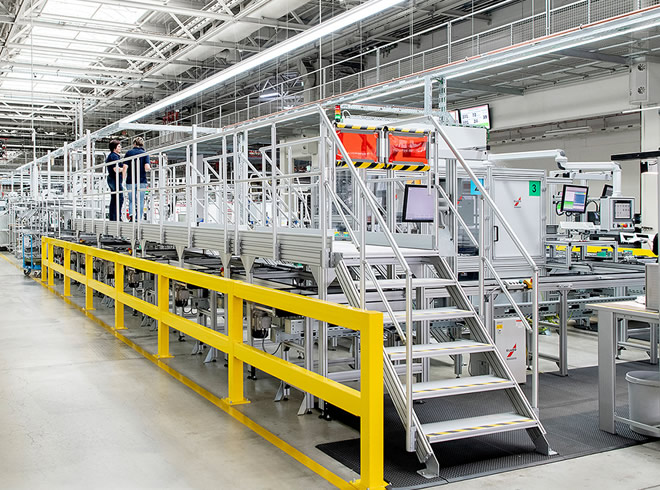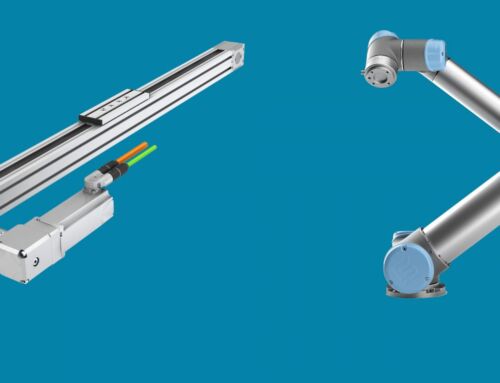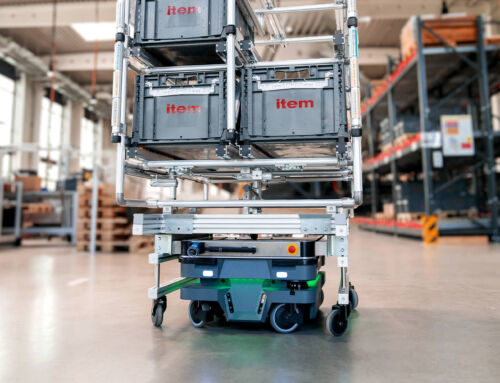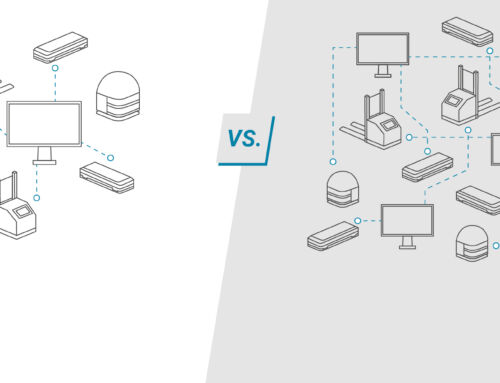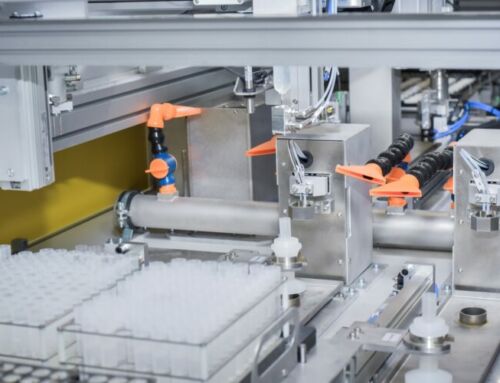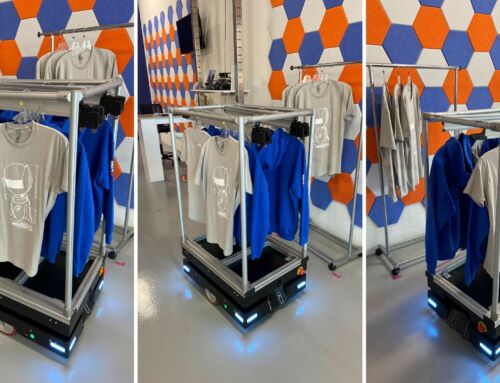Robots in industrial production can help human employees lighten their workload and – indirectly – even protect them. We are taking a look at these and other benefits of human-robot collaboration in this post.
Although it’s nearly impossible to imagine our modern everyday lives without technical equipment, humans and machines are still often seen as rivals; however, this ‘either/or’ mindset fails to consider the valuable third option of collaboration that has become ever more important in the face of digitalization and Industry 4.0.
We’re talking about human-robot collaboration.
Closer examination reveals the huge potential of this simple approach. It combines the experience, judgement, and flexibility of humans with the strength, stamina, and precision of robots, taking the strain off employees and boosting production efficiency. One feature of human-robot collaboration is the fact that there is no safety barrier separating the two as they work. Instead, they occupy the same workspace and process the same components. The whole setup is generally implemented using special lightweight robots known as collaborative robots, or simply: cobots.
The Benefits of Cobots: Less Monotony, Fewer Errors, High Reliability
Unlike industrial robots, which are generally designed for specific tasks, cobots are all-around performers. Their form and function are reminiscent of a human arm. The benefits of cobots, therefore, include the relatively small space they require and their versatility. They are capable of many different tasks. Primarily, these are the monotonous, repetitive tasks that bore human staff members in the long term and make them become tired quickly, leading to high error rates. Cobots can assist in this case, as demonstrated by an example from Miami. Creating Revolutions was tackling a two-digit error rate in the production of a special pager device for the hotel and hospitality sector. Having transferred a small number of selected worksteps – ones that require a huge amount of precision – to cobots, the error rate plummeted to less than one percent. Another advantage of cobots is that, if required, they can provide large volumes of data for use in predictive maintenance and other big data applications, for example.
When humans and robots work in close proximity to one another, special measures and precautions are necessary to ensure the safety of staff members. DIN ISO/TS 15066 in Germany and the American National Standards Institute’s RIA TR R15.606-2016 sets out the relevant safety requirements for collaborative industrial robot systems and working environments. Among other things, this defines the maximum amount of force a robot can bring to bear on contact with a human. These forces must therefore be limited to a safe level. To meet these requirements, cobots need suitable sensors that use ultrasonic and radar technology, for example, to detect people and obstacles in their environment. Some cobots are even equipped with a touch-sensitive surface that enables them to ‘feel’ contact with people and immediately cease any movement that might be underway. Machine structures and robot stands, as well as the safety and guarding system by item, provide the boundaries and structures that protect team members. When it comes to human-robot collaboration, the safety of the human members of staff has top priority.
Human-Robot Collaboration for Ergonomics
When it comes to human-robot collaboration, there is more to safeguarding the physical well-being of staff than ensuring workers are not hurt by their robot colleagues. Cobots frequently step into the breach for humans and take on physically demanding, unergonomic tasks for them. In the BMW Group’s Dingolfing plant, for example, cobots help install side windows in cars. Before the windows are fitted to the bodywork, adhesive must be applied to them in a precise process. This was previously done by hand, by a worker walking around the window. A cobot now takes care of this difficult, unergonomic task, with a human then installing the windows afterwards.
“Another advantage of cobots is they can lift heavy loads effortlessly.”
There are more benefits to cobots than their ability to take over tasks that involve body postures that prove to be tiring or unhealthy for their human counterparts in the long term. Human-robot collaboration also has an answer when it comes to lifting heavy loads. Cobots such as the Universal Robots UR16e are capable of lifting loads up to 16kg in weight. To put that into perspective, a 16-inch steel rim for a car wheel (without the tire) weighs around 8.5kg. If a robot can take care of this kind of load rather than human workers, there are more than physical benefits; for example, they can get ready to process the next component while the cobot moves the previous one to the side.
Humans and robots don’t need to be rivals – instead, combining their strengths can optimize value creation.
Interested in digitalization and what the future of mechanical engineering holds?
Simply subscribe to the item blog by selecting the box at the top right!
.
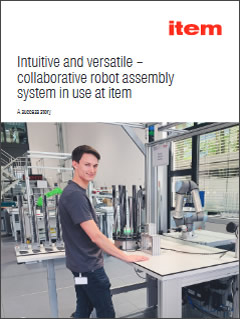 Interested in learning more?
Interested in learning more?
Download the free item Robotics Case Study!
.
